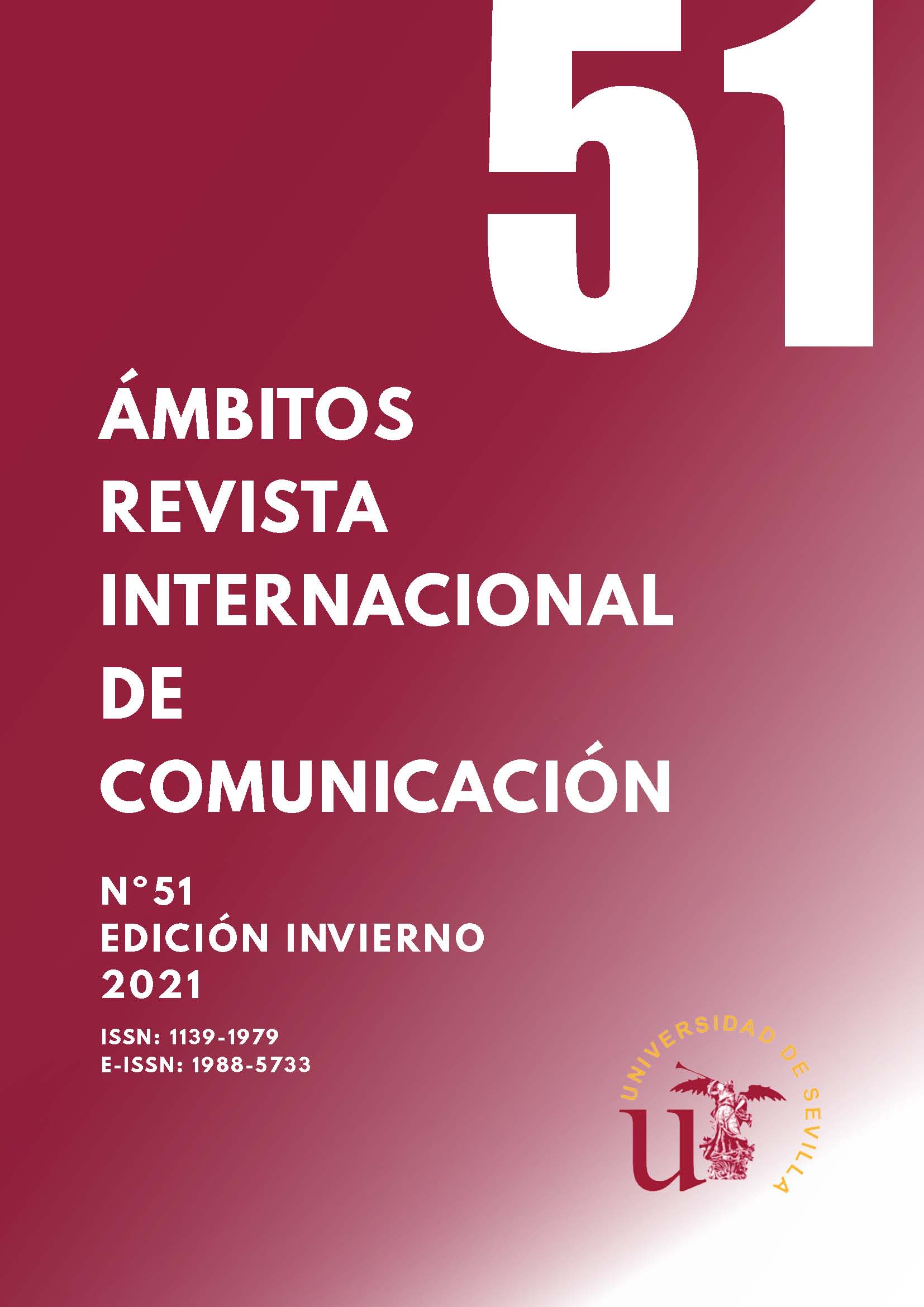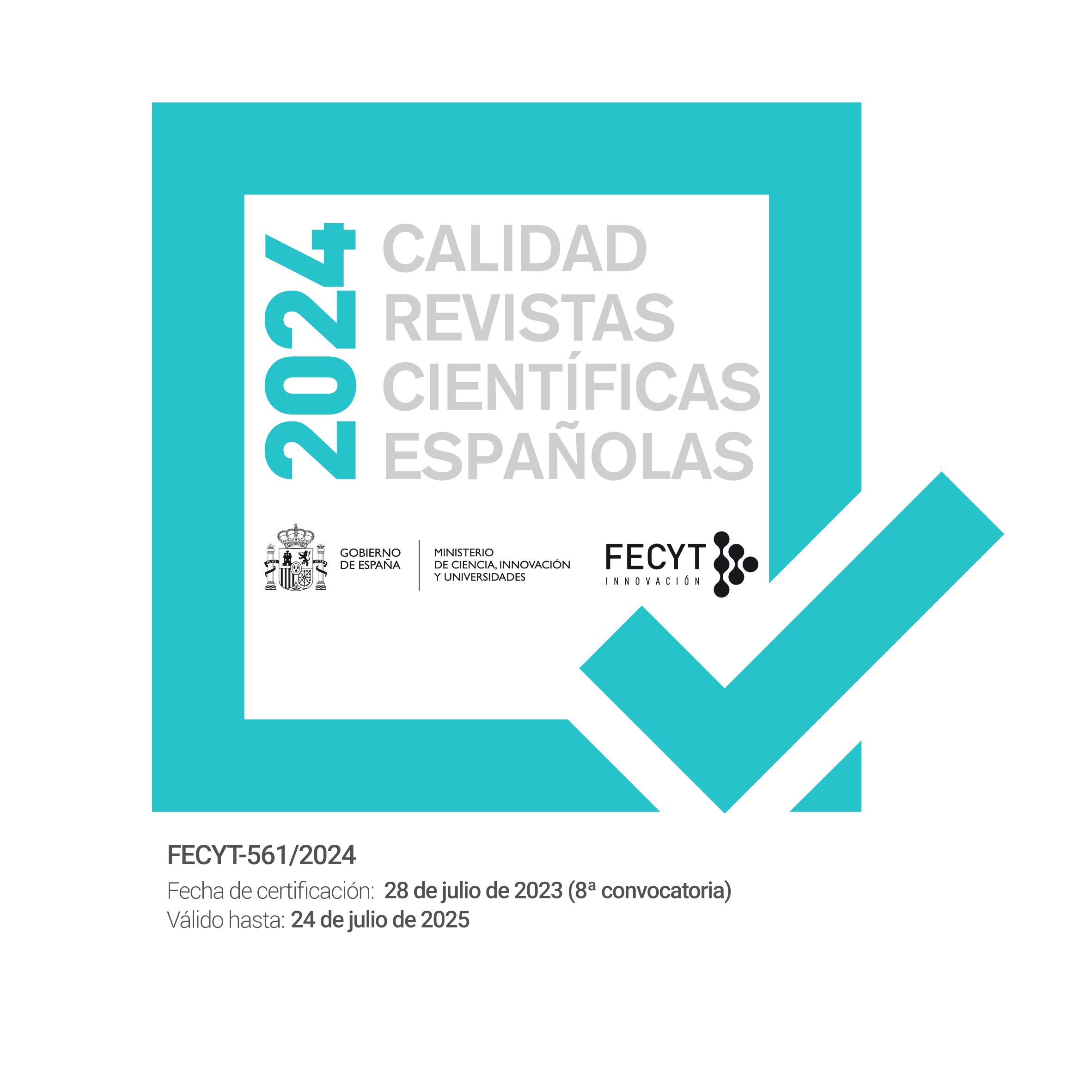Transmedia narrative in advertising: the case of “LEGO”
Transmedia narrative in advertising: the case of “LEGO”
DOI:
https://doi.org/10.12795/Ambitos.2021.i51.03Keywords:
Comunicación interactiva, Comunicación y televisión, narrativa audiovisual, publicidad televisiva, narrativa transmedia.Abstract
The development of technologies that promote medical convergence has changed, for brands, the way of doing public communication. The growth of new audiovisual content platforms and the use of social networks have made it possible for advertiser companies to migrate their public content to the Internet, and thus, maintain an interactive relationship with the consumer. Through this migration, an online advertising universe is built where new narratives that creatively display products and services are shown; place in which the consumer assumes a participatory role, in which the company can use communication to generate new strategies effectively. The Danish toy company LEGO has been an example of innovation in its products, as well as in its advertising campaigns, in this sense the use of transmedia storytelling for the distribution of audiovisual content affected by the expansion of the brand's universe, as well as the interaction with your target audience. This phenomenon enables personalized advertising experiences. The present work displays part of preliminary results of a qualitative research with an analytical-descriptive method to detect the implications of the LEGO toy company transmedia narrative in its advertising strategies; It also considers the opinion of experts in communication and narrative through a semi-structured questionnaire. Theoretical approaches are reflected on the elements of the transmedia process of television advertising to the Internet.
Downloads
References
Abellán H. M. & de Miguel, Z. M. (Coords.). (2016). Narrativa transmedia: resignificando el consumo mediático. Presentación. Icono 14, 14(1), 1-7. doi: 10.7195/ri14.v13i1.947.
Adweek.com. (2010). Then & Now: How fans chanced the face of Lego’s Marketing Strategy. Recuperado de https://bit.ly/2QG5LUw.
Agencia Telling. (2016). La estrategia publicitaria de Lego: Los maestros del social media y el marketing. Recuperado de https://bit.ly/2zy1z46.
Animation World Network. (2015). How Transmedia Made LEGO the Most Powerful Brand in the World. Recuperado de https://bit.ly/2TH3me0.
Aparici, R. & García-Marín, D. (2018). Prosumidores y emirecs: Análisis de dos teorías enfren-tadas. Comunicar, 26(55), 71-79. doi: https://doi.org/10.3916/C55-2018-07.
Bacca, G. (2015). Lego y la Innovación. Recuperado de https://bit.ly/2Ad9qUw.
Baltar, M. A. & Valencia, M. C. (2016): El relato de viajes como narrativa transmedia. Icono 14, (14), pp.181-210. doi: 10.7195/ri14.v14i1.926
BBVA. (2017). La apuesta por la innovación abierta: el caso Lego. Recuperado de https://bbva.info/3c88r5k
Bonardel, S. & Rodríguez, G. (2020). Las Metodologías de Innovación para el Diseño de Nue-vos Productos: Un enfoque al Consumidor. MADGU. Mundo, Arquitectura, Diseño Gráfi-co y Urbanismo, 3(5), 11-11.
Costa-Sánchez, C. (2013). Narrativas Transmedia Nativas: Ventajas, elementos de la planifica-ción de un proyecto audiovisual transmedia y estudio de caso. Historia y comunicación social, 18(3), 561-574. doi: https://doi.org/10.5209/rev_HICS.2013.v18.44349
Deloitte Insights. (2020). Estudio: Hábitos de los consumidores móviles en México 2019. Recuperado de https://bit.ly/3juOklV.
Entrepreneur. (2015). Lecciones de innovación de Lego que puedes aplicar en tu empresa. Recuperado de https://bit.ly/3d4LgtX
Facebook. (2020). Lego México. Recuperado de https://bit.ly/3ez8j0D.
Fidalgo, M. I. R., Ambrosio, A. P., Paz, Y. R. & Iglesias, L. J. (2017). Cambios en los modelos persuasivos: la nueva publicidad en tiempo real a través de estrategias narrativas trans-media. Estudio de caso de la campaña publicitaria de Tous, Tender Stories. adComnica, (14), 27-50. doi: 10.6035/2174-0992.
Formoso, B., M.J. (2016). Narrativa Transmedia en la autopromoción de ficción nacional. En La pantalla insomne. España: Universidad de La Laguna. Libro colectivo enlínea: http://www.cuadernosartesanos.org/#103. DOI: 10.4185.
Gomes, de O., R. & Costa, F. (2012). La triples Mímesis en la narrativa transmedia de la performance Esfuerzo. Comunicación, 10(1), 115-130.
Google Play. (2020). Apps. Recuperado de https://bit.ly/3fmLui5
Hernádez, S. R., Fernádez, C. C. & Baptista, L. M. (2014). Metodología de la Investigación. Mexico: Ill Interamericana de Mexico S.A.
HubSpot. (2018). Building a Creative Brand Strategy, Brick by Brick: The History of Lego Mar-keting. Recuperado de https://bit.ly/3eq2r9R.
IEBS School. (2015). NINJAGO: cuando te conectas con un universo Lego transmedia. Recu-perado de https://bit.ly/3c2MqVK.
Instagram. (2020). Lego. Recuperado de https://bit.ly/2AXOnFU.
Instituto Federal de Telecomunicaciones (2019). Ley Federal de Telecomunicaciones y Radiodi-fusión. Recuperado de https://bit.ly/32fHF9S.
Jenkins, H. (2009). Revenge of the Origami Unicorn: The Remaining Four Principles of Trans-media Storytelling. Recuperado de https://bit.ly/2TGt8yR.
Jenkins, H. (2008). Convergence culture: la cultura de la convergencia de los medios de comuni-cación. Barcelona: Paidós.
Lego. (2020a). The Lego Group History. Recuperado de https://bit.ly/2XxhHL1.
Lego. (2020b). The Lego Ideas. Recuperado de https://bit.ly/36BvUei.
Lego. (2020c). Series Lego en Netflix. Recuperado de https://bit.ly/2TH5sKS.
Lego Group. (2020). The LEGO Group Annual Report 2019. Recuperado de https://bit.ly/305K4S2.
Marketing Directo. (2015). La historia publicitaria de Lego: así se construye una marca pieza a pieza. Recuperado de https://bit.ly/2zoIUI3.
Marzal-Felici, J. J. & Casero-Ripollés, A. (2017). El discurso publicitario: núcleo de la comunicación transmedia. adComunica, (14), 11-19. doi: http://dx.doi.org/10.6035/2174-0992.2017.14.1
Molas-Castells, N. & Rodríguez-Illera, J.L. (2017). La narrativa transmedia: la Carta Ancestral en educación secundaria. Nuevos escenarios de la comunicación educativa. Razón y Palabra, 21(3_98), 221-233.
OBS Business School. (2019). Caso LEGO: cómo utilizar las plataformas sociales para innovar. Recuperado de https://bit.ly/2ZFxgTy.
Pallarès-i-Maiques, M. (2017). La publicidad de hoy, ¿Es más dialogante? En Castelló-Martínez, A. & del Pino-Romero, C. (Coords), Publicidad y Convergencia Mediática. Nuevas estra-tegias de comunicación persuasiva (p. 43). Sevilla: Egregius.
Pérez-Seijo, S., Melle-Goyanes, M. & López-García, X. (2018). Narrativas transmedia y niveles de inmersión y participación e las historias: estudio de casos comparativo de le Goût du Risque y Misántropo. En Cantalapiedra, N., B. Experiencias transmedia en el universo medático. (pp. 29- 50). Sevilla: Egregius.
Pham, Q. T., & Tran, N. K. P. (2020). The impact of incentive mechanism and knowledge sha-ring motivation on the satisfaction of fanpage's members on Facebook in Viet-nam. International Journal of Entertainment Technology and Management, 1(1), 64-79. doi: 10.1504/IJENTTM.2020.105675.
Roglá, L. J. L. (2019). La narrativa transmedia: el caso LEGO. En González, O. C y Fanjul, P. C. (Eds.) COMLOC 2018: El negocio publicitario en la sociedad digital (pp.197-212). Col-lecció Humanitat 59, Universitat Jaume I.
Rodríguez, J. M. C. (2016). ¿Cuándo es transmedia?: discusiones sobre lo transmedia (l) de las narrativas. Revista ICONO14 Revista científica de Comunicación y Tecnologías emergentes,14(1), 30-48. https://doi.org/10.7195/ri14.v14i1.919.
Sánchez-López, I. (2020). Narrativas en la era digital: mediaciones del relato y empodermamiento creativo en la generación Z. (Tesis doctoral). Universidad de Huelva. España.
Scolari, C. (2013). Narrativas transmedia: cuando todos los medios cuentan. Barcelona: Deusto.
Scolari, C. & Piñón, J. (2016). Las narrativas transmedia en el mercado audiovisual latino de Estados Unidos. Actores, contenidos y estrategias. Comunicación y Sociedad. Nueva época, 27, septiembre-diciembre, 13-52.
Social Blade. (2018). Lego. Recuperado de https://bit.ly/3c4tTIB.
Story SD. (2020). 112 Lego (Transmedia Storytelling Case Study). Recuperado de https://bit.ly/2TFKgFd.
Téllez G., A.M. (2017). Dadá: Repertorio de la narrativa transmedia. Dialogía, 11, 109-135.
Twitter. (2020). Lego Group. Recuperado de https://bit.ly/2yxWlVo.
Downloads
Published
How to Cite
Issue
Section
License
Ámbitos. Revista Internacional de Comunicación is an open access journal, which means that all content is freely available at no charge to the user or their institution. Users may read, download, copy, distribute, distribute, print, search or link to the full text of articles, or use them for any other lawful purpose, without seeking prior permission from the publisher or author. This definition of open access is in accordance with the Budapest Open Access Initiative (BOAI).

Unless otherwise noted, all content in the electronic edition is distributed under a "Creative Commons Attribution-NonCommercial-ShareAlike 4.0 International License". You can consult the informative version and legal text of the licence here. This should be expressly stated in this way where necessary.
In case of acceptance of the manuscript, the authors cede the rights of the work for its publication to Ámbitos. Revista Internacional de Comunicación under the Attribution-NonCommercial-ShareAlike 4.0 International license contract (CC BY-NC-SA 4.0). The authors retain copyright and third parties are authorised to copy, distribute and make use of the work, provided they comply with the terms and conditions set out in the licence
- Cite the authorship and the original source of publication (journal, publisher and URL of the work).
- Do not use them for commercial purposes.
- If you remix, transform or create from the material, you must release your contributions under the same license as the original.
More information can be found at https://creativecommons.org/licenses/by-nc-sa/4.0/deed.es


















